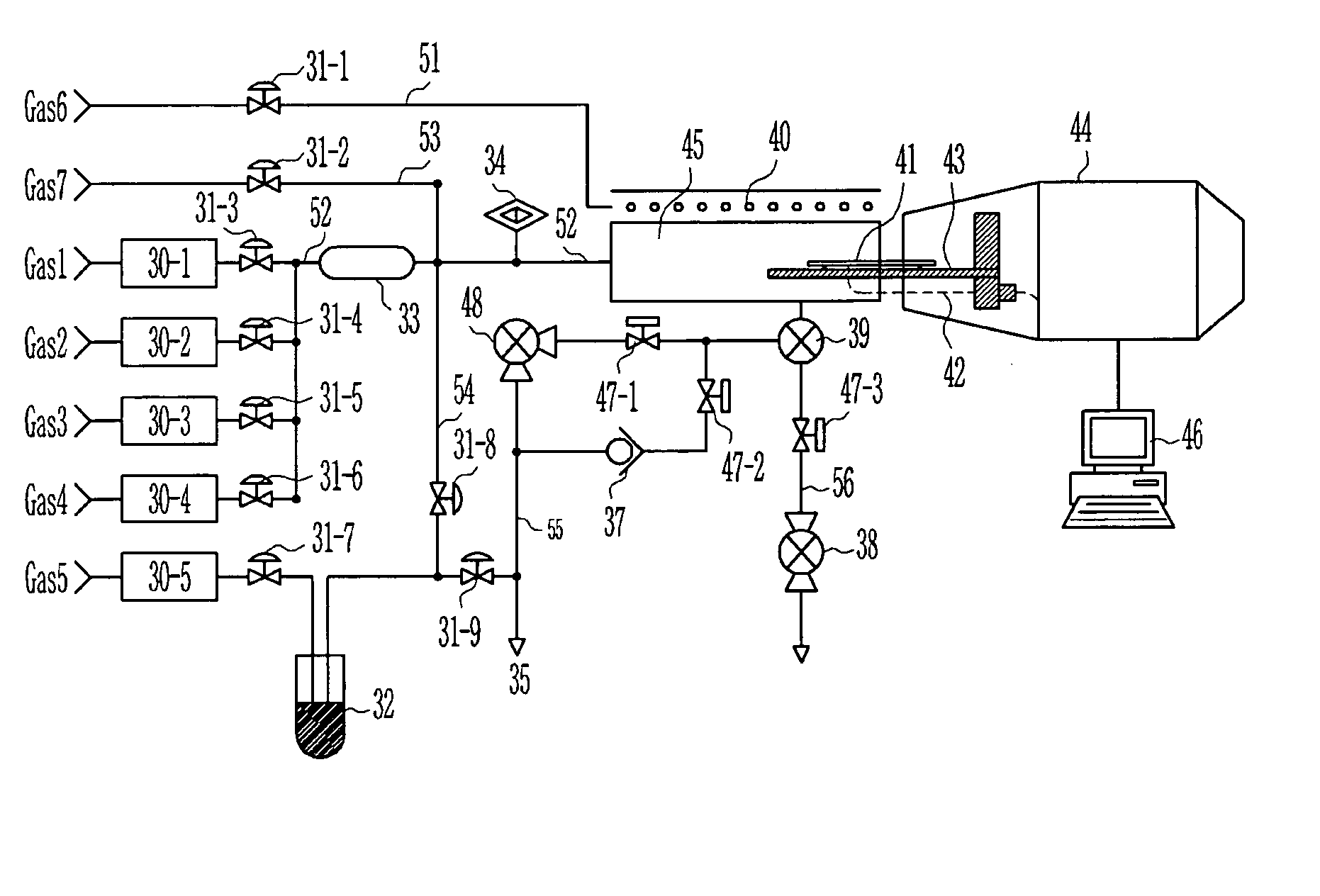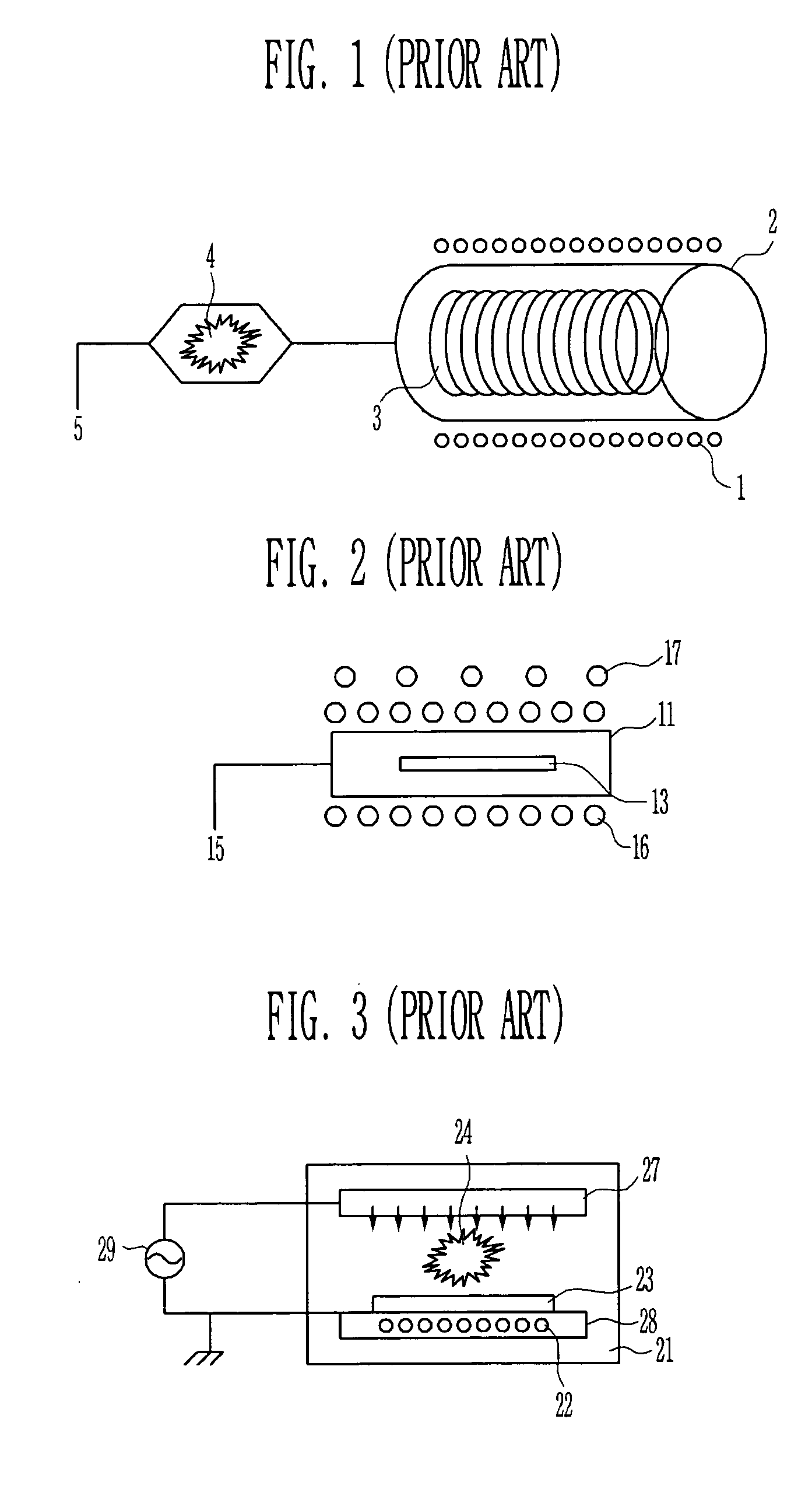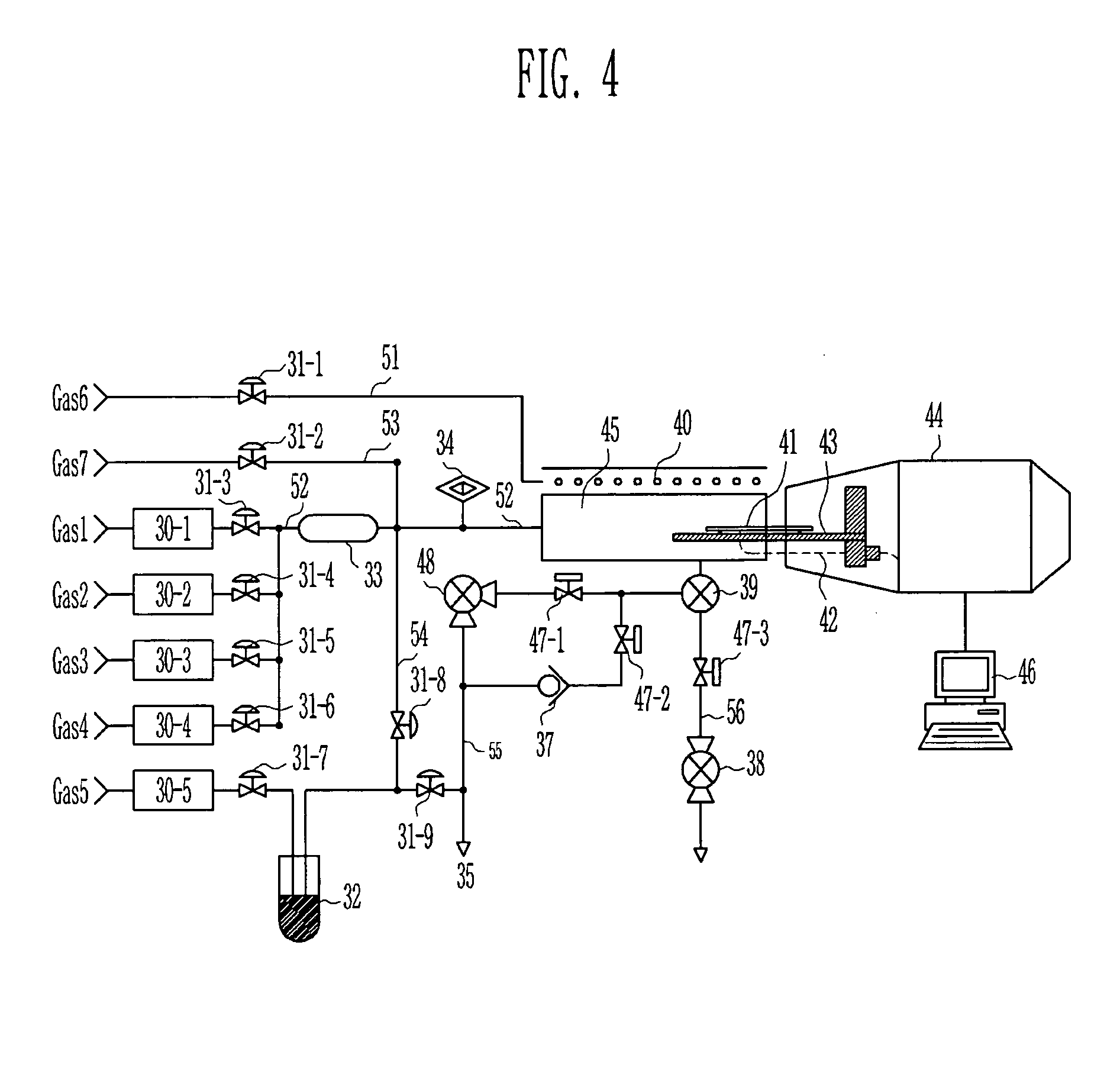Radical assisted oxidation apparatus
a technology of oxidation apparatus and oxidation film, which is applied in the direction of lighting and heating apparatus, muffle furnaces, furnaces, etc., can solve the problems of physical limitation, inability to control the diffusion of impurities, and difficulty in applying film to practical us
- Summary
- Abstract
- Description
- Claims
- Application Information
AI Technical Summary
Benefits of technology
Problems solved by technology
Method used
Image
Examples
Embodiment Construction
[0034] Now, the preferred embodiments according to the present invention will be described with reference to accompanying drawings. Since preferred embodiments are provided for the purpose that the ordinary skilled in the art are able to understand the present invention, they may be modified in various manners and the scope of the present invention is not limited by the preferred embodiments described later.
[0035] In an integration of a semiconductor device, a primary variable of a scaling factor (1 / α) related to a decrease of a device size may be a gate length and width. Thus, a degree of integrity increases proportional to α2, power consumption decreases proportional to 1α2
since a driving voltage (Vgs−Vth) is controlled to have a small value, and an operation speed would be improved. A drain saturation current in a channel of a device could be represented as follows in Equation 1; ID,sat=WLμ Cinv(VGS-Vth)22n〈Equation 1〉
[0036] Where, n=1+Cd / COX, SS(mV / dec)=n(kT / q)ln(10)....
PUM
 Login to View More
Login to View More Abstract
Description
Claims
Application Information
 Login to View More
Login to View More - R&D
- Intellectual Property
- Life Sciences
- Materials
- Tech Scout
- Unparalleled Data Quality
- Higher Quality Content
- 60% Fewer Hallucinations
Browse by: Latest US Patents, China's latest patents, Technical Efficacy Thesaurus, Application Domain, Technology Topic, Popular Technical Reports.
© 2025 PatSnap. All rights reserved.Legal|Privacy policy|Modern Slavery Act Transparency Statement|Sitemap|About US| Contact US: help@patsnap.com



